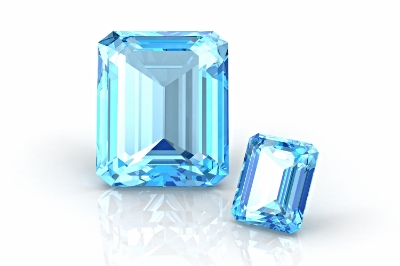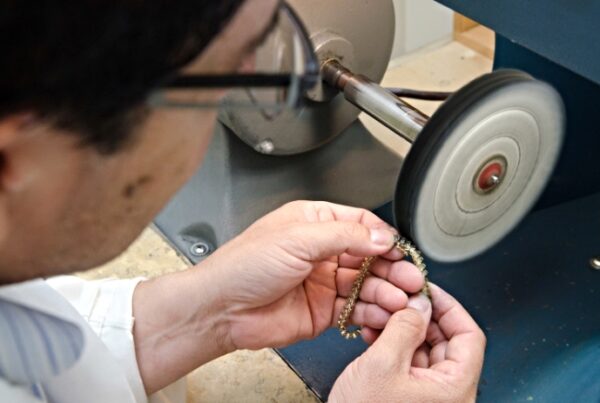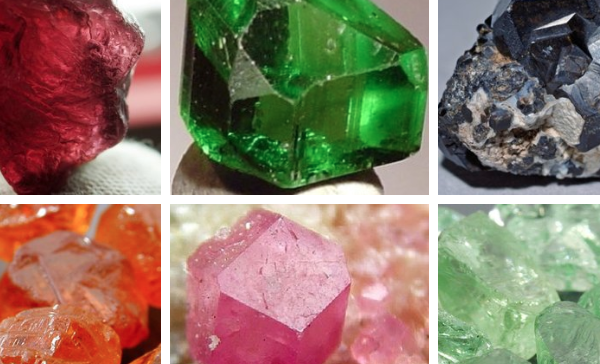13 Fascinating Facts About Aquamarine
March Birthstone
Many people know that the aquamarine gemstone is the birthstone for March. It is also highly recognizable for its beautiful, clear blue color. What many people do not know is that this icy blue gem has been believed throughout the ages to possess mystical powers! Here are 13 fascinating facts about aquamarine.
Name and Uses
Aquamarine gets its name from Latin “aqua marina” which means “sea water.” It references the similarity of the gemstone’s color and clarity to that of the ocean.
Decorative jewelry and protective amulets using aquamarine have been found that date back as far as 500 B.C. It has been used for its great beauty and for its powers of healing, especially the ability to calm and sooth the nerves.
Protection for Sailors
Believed to be a precious treasure from mermaids, sailors have worn aquamarine amulets to keep them safe at sea, ward off seasickness, and protect them from Satan.
Healing Properties
This beautiful gem is believed, even now, to be a powerful meditation tool. It is supposed to lead the meditator to his or her core spirituality.The Romans believed that aquamarines could cure medical problems with the liver, stomach, and throat. Healers used it to reduce fluid retention and to calm the nerves.
In the Middle Ages, this gemstone was used to reduce anxiety and the toxicity of poisons.
Mystical Powers
Wearing aquamarine was believed to increase courage, happiness, intelligence, wisdom, and youthfulness. It was also used to protect against gossip!
Today aquamarine is considered a symbol of faithfulness, courage, and friendship.
Known as the birthstone for the month of March, this gem is also the wedding anniversary gemstone for the 19th year of marriage. It is associated with the zodiac sign of Pisces and the planet Neptune.
Aquamarine Properties
The aquamarine is a semi-precious gem is a member of the beryl family, which includes emerald and morganite. Aquamarine gemstones are graded using the same system as for diamonds – by color, cut, clarity, and carat weight.
Rated 7.8 on the Mohs hardness scale, aquamarine is soft enough to accommodate a wide variety of gemstone cutting styles and shapes. Lapidaries continue to experiment to fine new ways of enhancing this gem.
Favorite of Designers
Aquamarine is favorite gemstone among contemporary jewelry designers because even the palest blue gem can be a stunning jewel. It lends itself to such an assortment of shapes and cuts, that it gives designers great freedom in artistic expression.
Color
Aquamarine ranges in color from sea-foam green, to blue-green, to teal. The color is graded on its hue, tone, and saturation – hue for whether it is a warm or cool shade, tone for how light or dark the color is, and color saturation for the quality of being dull or a vivid blue.
Heat Treating
Although different shades of aquamarine have been popular at certain times in history, currently the preferred color is a lovely sky-blue. Some greenish colored aquamarines are heat treated to improve their clarity and change their color to a light blue. Heat treatment is almost impossible to detect. The changes caused by the treatment are permanent. The treatment usually adds value to the gem because of the color improvement.
Location
While the most valuable aquamarines are mined in Columbia and Brazil, caches of the gem have been found even in the Colorado Rocky Mountains. Other mines extracting gem quality material are found in Kenya, Zambia, Afghanistan, Pakistan, Sri Lanka, Russia, Tanzania, Nigeria, and Madagascar.
Raw Material
Although non-gem quality aquamarine crystal has been found at weights up to several tons, the largest gem quality raw stone was found in Brazil in 1910 in the village of Minas Gerais. This 243-pound raw aquamarine was cut into more than 100,000 carats of finished gemstones.
The Don Pedro
The world’s largest cut aquamarine, named the Don Pedro, is exhibited at the Natural History Museum at the Smithsonian in Washington, D.C.
Aquamarine Care
Aquamarine is very durable and does not require any special care. Unless the jewel has an internal occlusion (flaw), it is safe to use in ultrasonic cleaners. At-home care requires only a soft brush and soapy water. Rinse and wipe.
The beautiful range of colors, sizes, and ability to dazzle, as well as its mystical qualities, have made the aquamarine a favorite among gems for over two thousand years. Tell us which of our 19 facts and folklore items tickled your fancy!





thanks
This helped a lot because I had to do research on my birth stone and this is a lot of good information!
Whow